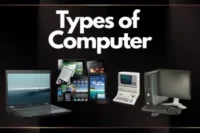What Is the History of the Webcam?
Published: 31 Jan 2025
Webcams are now a common tool in our daily lives, used for communication, work, and even entertainment.
But have you ever wondered where they came from? The history of the webcam is quite fascinating, starting from its invention in the 1990s to its widespread use today.
Let’s take a look at how webcams have evolved over the years and the important role they play in modern society. In this article, we will discuss the history of a webcam in detail.
The Early Development of Cameras
- Early Cameras: Before webcams, cameras were invented in the 1800s, laying the foundation for all future image-capturing devices.
- Technology Used: Early cameras used film to capture images, unlike today’s digital methods.
- Progression: Over time, cameras became smaller and more efficient, and digital technology began to be incorporated.
- Connection to Webcams: These advancements set the stage for creating devices that transmit live video, such as webcams.
The Birth of the Webcam
- Invention of the First Webcam: In 1993, researchers at the University of Cambridge created the first webcam.
- Purpose: It was originally designed to monitor a coffee pot so that researchers could check whether coffee was available without walking to the coffee room.
- The Name: This invention was called the “Trojan Room Coffee Pot” webcam.
- Live Streaming: This was one of the earliest forms of online live streaming.
The First Webcam: The Trojan Room Coffee Pot
- Location: This famous webcam was placed in the Trojan Room at the University of Cambridge.
- Working Mechanism: The camera would capture images of the coffee pot every few seconds and display them on a computer.
- Popularity: This webcam became widely known, and people from all over the world would check to see if the coffee pot was full or empty.
- End of an Era: The webcam stayed operational until 2001 when the coffee pot was retired.
Evolution of Webcams in the 1990s
- Increased Demand: As the internet grew, so did the demand for webcams, especially for communication.
- Early Webcams: The first commercially available webcams had low resolution and frame rates.
- Technological Improvements: Throughout the 1990s, companies started improving webcams, increasing both their resolution and performance.
- Widespread Use: By the end of the decade, webcams were being used in homes and businesses across the world.
Webcams and the Internet Boom
- Internet’s Role: The rise of the Internet in the late 1990s played a huge role in making webcams popular.
- Online Video Calls: Webcams allowed for video calls over the internet, which was a breakthrough in communication.
- Affordable Prices: Webcams became more affordable, making them accessible to everyday users.
- Wider Adoption: Schools, businesses, and even families began using webcams to stay connected.
Webcam Technology in the Early 2000s
- USB Webcams: The introduction of USB webcams made it easier to connect them to computers.
- Built-in Cameras: Laptop manufacturers began integrating webcams directly into the computers.
- Better Quality: Image quality improved significantly with higher-resolution sensors.
- New Uses: People began using webcams not only for communication but also for gaming, streaming, and content creation.
The Impact of the COVID-19 Pandemic
- Increased Use: During the COVID-19 pandemic, the use of webcams skyrocketed as people worked and studied from home.
- Essential Tool: Webcams became an essential tool for virtual meetings, online classes, and staying connected with loved ones.
- Demand for Better Cameras: The pandemic led to increased demand for high-quality webcams with better resolution and audio features.
Conclusion
In this article, we have discussed the history of a webcam in detail. The history of the webcam shows how this small device has transformed the way we communicate, learn, and stay connected with others.
Webcams have become a critical part of our digital lives, from their humble beginnings of monitoring a coffee pot to their essential role during the COVID-19 pandemic. As technology advances, the future of webcams looks bright, with even more innovative features and uses on the horizon.
FAQs ( Frequently Asked Questions)
Here are some of the most frequently asked questions related to the history of a webcam.
The first webcam was created in 1993 by researchers at the University of Cambridge.
It was used to monitor a coffee pot in the Trojan Room to check if coffee was available.
Webcams have improved in resolution, and functionality, and are now widely used for communication and security.
Webcams allow face-to-face interaction during video calls, making conversations more personal and engaging.
Yes, webcams are often used for surveillance, providing real-time monitoring for homes and businesses.
Webcam usage surged during the pandemic as more people worked and attended classes from home.
Webcams enable virtual learning, allowing students to attend classes remotely and interact with teachers.
Privacy concerns and the potential for hacking are key challenges, but security features help mitigate these risks.
Webcams often provide better video quality for calls, while smartphones are more portable and versatile.
Webcams will continue to improve with higher resolution, AI features, and greater integration with smart devices.

- Be Respectful
- Stay Relevant
- Stay Positive
- True Feedback
- Encourage Discussion
- Avoid Spamming
- No Fake News
- Don't Copy-Paste
- No Personal Attacks

- Be Respectful
- Stay Relevant
- Stay Positive
- True Feedback
- Encourage Discussion
- Avoid Spamming
- No Fake News
- Don't Copy-Paste
- No Personal Attacks




